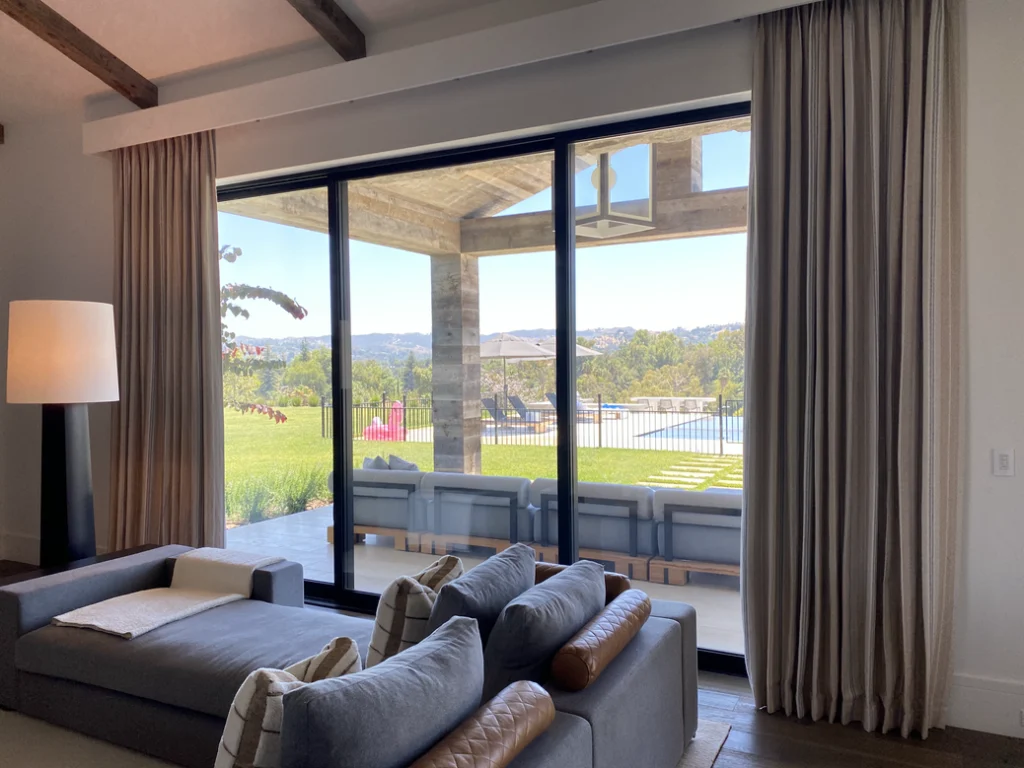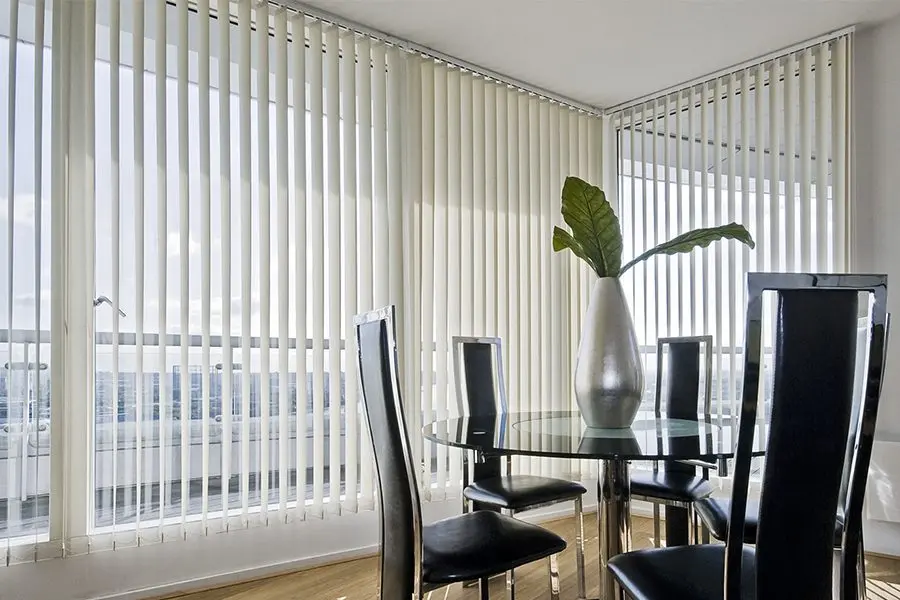Blinds vs. curtains play a crucial role in setting the tone of a room when designing or updating your home. Both options come with distinct advantages, styles, and functional benefits. So, how do you choose between blinds vs. curtains? In this article, we’ll explore the differences between these popular window coverings to help you decide which option best suits your style and needs.
Blinds: Sleek, Modern, and Functional
1. What Are Blinds?
Blinds are structured window treatments made from various materials like wood, faux wood, aluminum, or fabric. They consist of horizontal or vertical slats that can be tilted open or closed to control light and privacy. Blinds are popular for their minimalistic and functional design, often complementing modern interiors.

2. The Benefits of Blinds
- Light Control: Blinds offer precise control over the amount of light entering a room. Whether you want to block out sunlight entirely or simply diffuse it, blinds allow you to adjust the slats to your preference.
- Privacy: Blinds can be tilted to offer privacy while still letting light in. This makes them ideal for bedrooms, bathrooms, and street-facing windows.
- Variety of Styles: There are many types of blinds to choose from, such as roller blinds, Venetian blinds, vertical blinds, and Roman blinds. Each offers a unique look and function, from sleek and minimalist to soft and elegant.
- Easy Maintenance: Blinds are easy to clean, often requiring just a simple dusting or wipe with a damp cloth, which makes them a low-maintenance option.
3. Ideal Homes for Blinds
Blinds are particularly well-suited to contemporary homes, apartments, and offices. If your style leans toward modern, minimalist, or industrial aesthetics, blinds will enhance the look of your space. They also work well in areas with high humidity, like kitchens and bathrooms, where curtains may not hold up as well.
Curtains: Classic, Elegant, and Versatile
1. What Are Curtains?
Curtains are fabric window coverings that hang from a rod or rail. Available in a vast array of materials, colors, patterns, and lengths, curtains are a versatile option that can instantly add warmth, color, and texture to any room.

2. The Benefits of Curtains
- Design Flexibility: Curtains come in various fabrics, including cotton, linen, velvet, and silk, offering nearly limitless design options. Whether you prefer a light, airy look or rich, heavy drapes, curtains allow for creativity in personalizing your space.
- Insulation and Noise Reduction: Thick, lined curtains can help insulate your home by trapping heat during colder months and keeping it cool in the summer. Additionally, curtains can dampen sound, making them ideal for rooms where noise reduction is a priority.
- Soft Aesthetic: Curtains soften the appearance of a room and are perfect for creating a cozy, inviting atmosphere. They can add drama and elegance to spaces like living rooms, dining rooms, and bedrooms.
- Layering Potential: Curtains can be layered with blinds or shades to create a more luxurious look. Layering also offers additional functionality, such as increased privacy and better light control.
3. Ideal Homes for Curtains
Curtains work well in traditional, vintage, and eclectic homes, adding warmth and personality. They’re particularly effective in bedrooms, living rooms, and dining rooms where a softer, more luxurious look is desired. Curtains can also be used in spaces with high ceilings to create a grand, elegant feel.
Comparing Blinds and Curtains: What to Consider
When choosing between blinds and curtains, several factors should influence your decision:
1. Style and Aesthetics
Blinds generally offer a sleek and clean look, while curtains provide a softer, more decorative touch. Consider the overall aesthetic of your space. For a modern or minimalist design, blinds may be the better choice. However, if you prefer a cozy or traditional feel, curtains will elevate the style of your room.
2. Light and Privacy Control
Blinds offer greater precision in controlling light and privacy. You can tilt the slats to adjust how much light enters the room without sacrificing privacy. On the other hand, curtains can block out light effectively, but they don’t offer the same level of control unless paired with sheer layers or blackout linings.
3. Functionality
If you’re looking for window coverings for a high-traffic area, like the kitchen or bathroom, blinds might be more practical due to their moisture-resistant and easy-to-clean properties. Curtains, while elegant, may not hold up as well in these environments.
4. Maintenance
Blinds are easier to clean, especially those made from materials like faux wood, aluminum, or plastic. A quick dusting or wiping is typically sufficient. Curtains, however, may require professional cleaning depending on the fabric, especially heavier materials like velvet or silk.
5. Budget
Blinds generally have a wider range of pricing options depending on the material and style, but they tend to be more affordable than custom-made curtains. However, curtains can last longer and may offer additional benefits like insulation and noise reduction, making them a worthy investment in certain homes.
Blinds and Curtains Together: Best of Both Worlds
If you can’t decide between blinds and curtains, why not use both? Layering blinds and curtains offers the benefits of both light control and design flexibility. For instance, you can pair sleek roller blinds with sheer curtains to create a modern look while still allowing privacy and softness.
Conclusion: Which Window Covering Suits Your Style?
The choice between blinds and curtains ultimately comes down to personal preference, functionality, and the specific needs of your space. Blinds are ideal for a modern, minimalist aesthetic with practical benefits like light control and easy maintenance. Curtains, on the other hand, offer a classic, elegant look and provide insulation and sound-dampening qualities.
To find the perfect balance, consider the room’s purpose, design, and how much time you’re willing to invest in upkeep. In the end, both blinds and curtains are excellent options that can enhance the beauty and functionality of your home.
